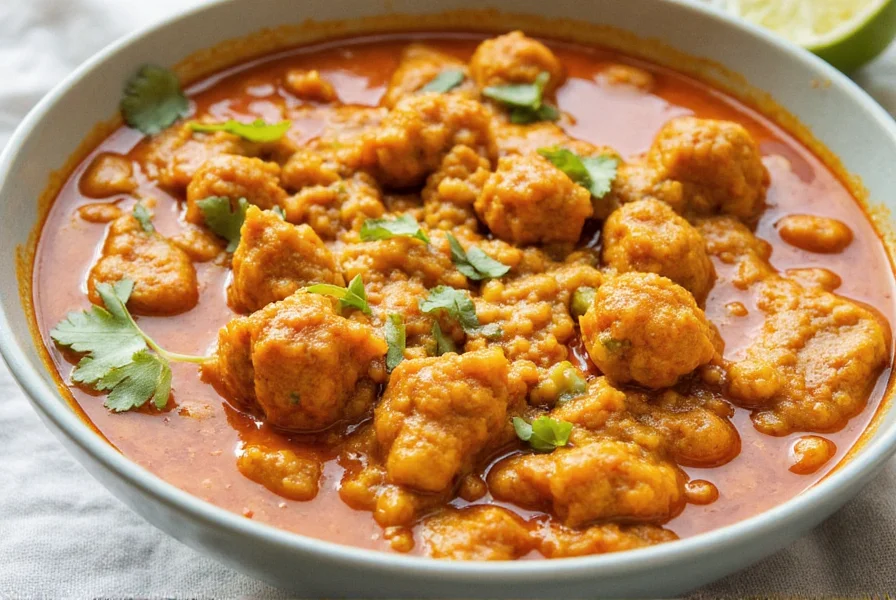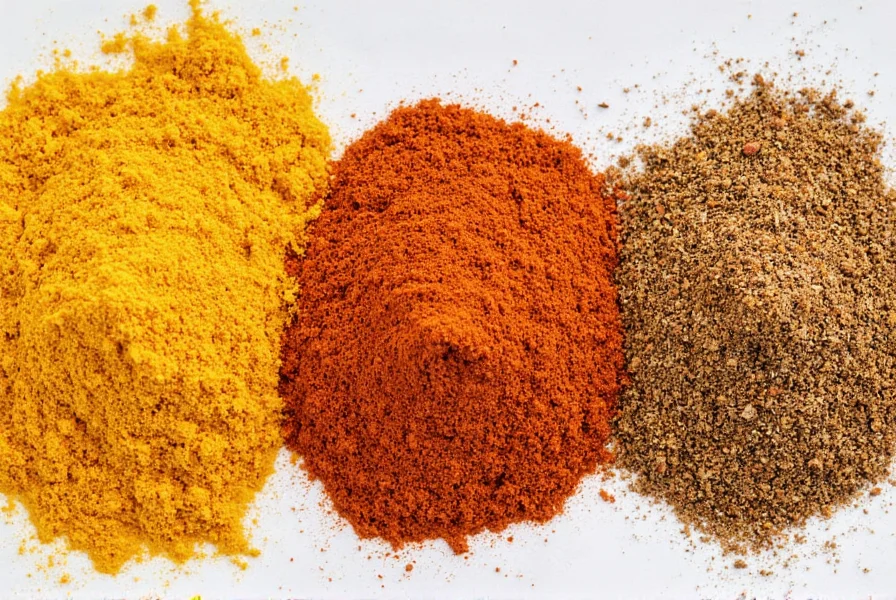Table of Contents
Introduction to Curry Spice
Curry spice is a blend of ground spices commonly used in Indian, Thai, and other Asian cuisines to add depth, warmth, and complexity to dishes. It typically includes turmeric, cumin, coriander, ginger, garlic, and chili powder, with variations based on regional recipes.
What Is Curry Spice?
Curry spice is not a single ingredient but a carefully balanced mixture of multiple spices. The exact composition varies by region: Indian blends emphasize turmeric and garam masala, Thai versions include lemongrass and kaffir lime leaves, and Japanese curry features milder ingredients like cinnamon and nutmeg. This versatility makes it a foundational element in global cooking.
Types of Curry Spice
Here are the most common regional variations:
- Indian Curry Spice: Bold and complex, featuring turmeric, cumin, coriander, garam masala, and chili powder.
- Thai Curry Spice: Fragrant and spicy, with lemongrass, galangal, kaffir lime leaves, and fresh chilies.
- Japanese Curry Spice: Mild and sweet, incorporating cinnamon, cloves, nutmeg, and a touch of soy sauce.
- Mexican Curry-Inspired Blend: Smoky and earthy, using chili powder, cumin, and paprika for a unique twist.

How to Use Curry Spice
Maximize flavor by following these key techniques:
- Start with small amounts: Begin with 1/2 to 1 teaspoon per serving, adjusting to taste.
- Toast whole spices: Heat whole spices (e.g., cumin seeds) in a dry pan before grinding to release essential oils.
- Add early in cooking: Integrate curry spice during the initial sautéing stage to allow flavors to meld with fats and aromatics.
- Balance with liquids: Mix with water, coconut milk, or broth to create a paste that evenly coats ingredients.
Cooking Tips with Curry Spice
Enhance your dishes with these expert strategies:
- Pair with proteins: Chicken, beef, lamb, and tofu absorb curry spice beautifully, creating rich, savory profiles.
- Boost vegetables: Potatoes, cauliflower, and carrots develop deeper flavors when cooked with curry spice.
- Elevate sauces: Add 1-2 teaspoons to tomato-based sauces or gravies for layered complexity.
- Customize blends: Experiment by adding fenugreek for bitterness or cardamom for sweetness to tailor flavors.
| Aspect | Description |
|---|---|
| Features | Look for blends containing turmeric, cumin, coriander, and chili powder. Premium versions may include garlic, ginger, mustard seeds, or dried herbs for enhanced depth. |
| Advantages | High-quality blends offer vibrant color, strong aroma, and consistent flavor. Fresh spices retain potency longer and prevent bitter aftertastes. |
| Use Cases | Ideal for curries, stews, soups, marinades, roasted vegetables, and even popcorn seasoning. Works in both traditional and modern fusion recipes. |
| Target Audience | Home cooks seeking authentic flavors, professional chefs exploring global cuisine, and health-conscious individuals wanting natural flavor enhancers. |
| Suitable Occasions | Everyday meals, special dinners, holiday feasts, and meal prep. Perfect for quick weeknight dinners or elaborate cultural dishes. |
Frequently Asked Questions
What's the difference between curry powder and curry paste?
Curry powder is a dry spice blend used primarily in Indian cuisine, while curry paste is a wet mixture containing fresh ingredients like lemongrass, galangal, and chilies, common in Thai cooking. Curry paste requires frying in oil to release flavors, whereas curry powder can be added directly or toasted for intensity.
How long does curry spice stay fresh?
Stored in an airtight container away from light and heat, curry spice maintains peak flavor for 6-12 months. Whole spices last longer than ground versions. Staleness is indicated by faded color or weak aroma.
Can I substitute curry powder for curry paste in recipes?
For every tablespoon of curry paste, use 1 tablespoon curry powder mixed with 1 teaspoon oil and 1 teaspoon water. Note that paste contains fresh ingredients that provide a distinct flavor profile not fully replicated by dry blends.
Is curry spice naturally spicy?
Not inherently. Heat levels vary by blend: Japanese curry is mild, Indian and Thai versions can be spicy, and some blends omit chilies entirely. Adjust heat by choosing specific varieties or modifying chili content.
What are the health benefits of curry spice?
Curry spice contains turmeric (curcumin), which has anti-inflammatory properties supported by research from the National Institutes of Health. Other spices like cumin and coriander aid digestion and provide antioxidants. Enjoy as part of a balanced diet for nutritional benefits.
How much curry spice should I use in a typical recipe?
For 4-6 servings, start with 1-2 tablespoons. Add early in cooking to develop flavors, and taste as you go. Adjust based on blend intensity and personal preference—some premium blends are more potent than others.
Conclusion
Curry spice is a versatile culinary tool that transforms simple ingredients into complex, flavorful dishes. By understanding regional variations, proper usage techniques, and quality selection, you can confidently incorporate this global staple into your cooking repertoire.











 浙公网安备
33010002000092号
浙公网安备
33010002000092号 浙B2-20120091-4
浙B2-20120091-4